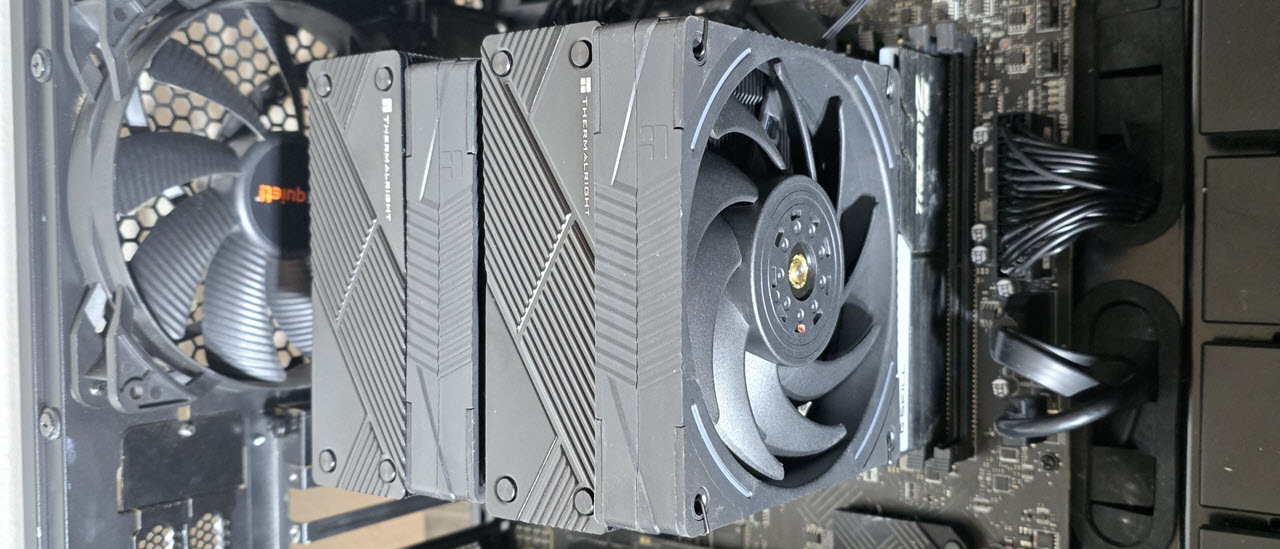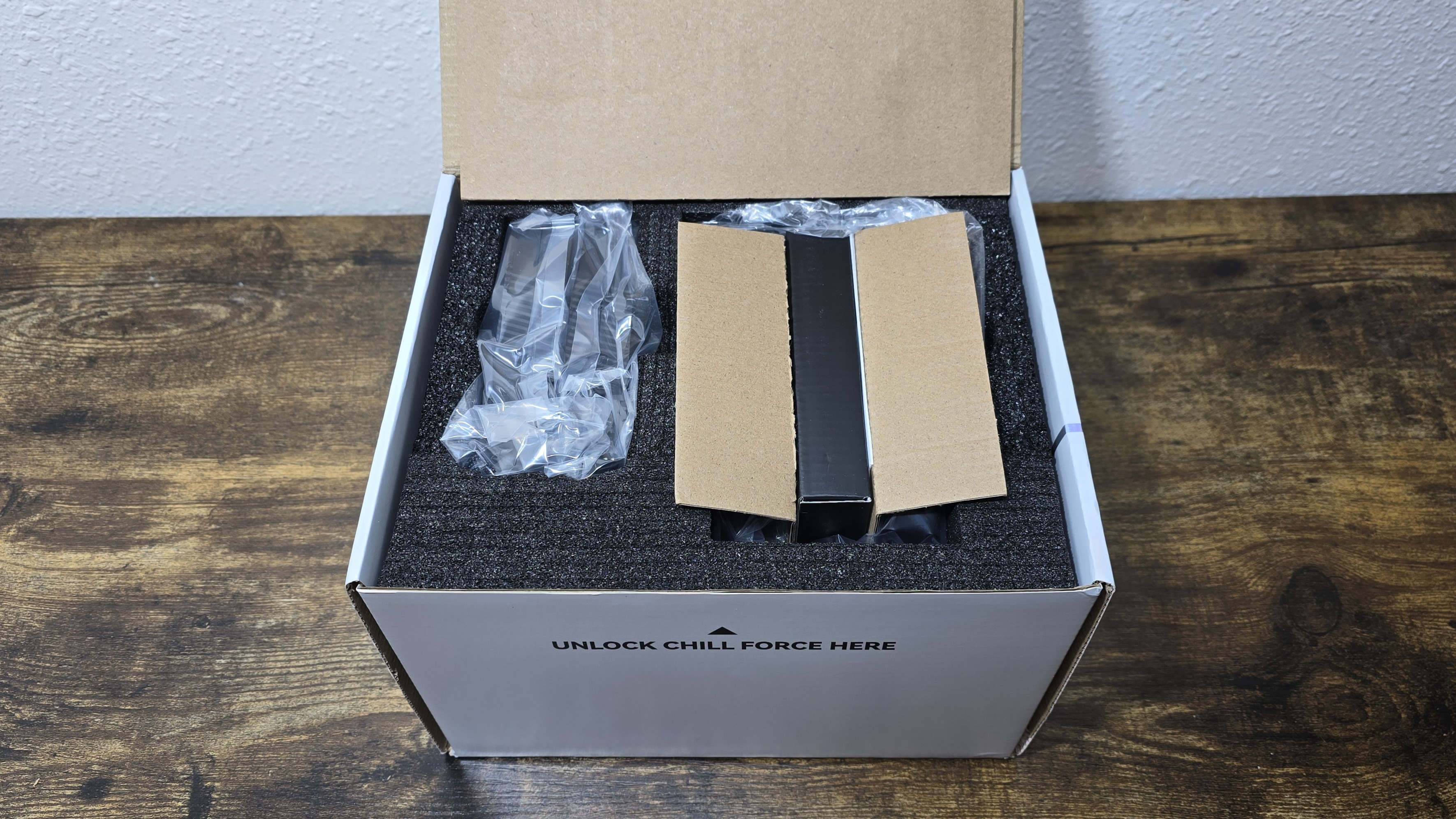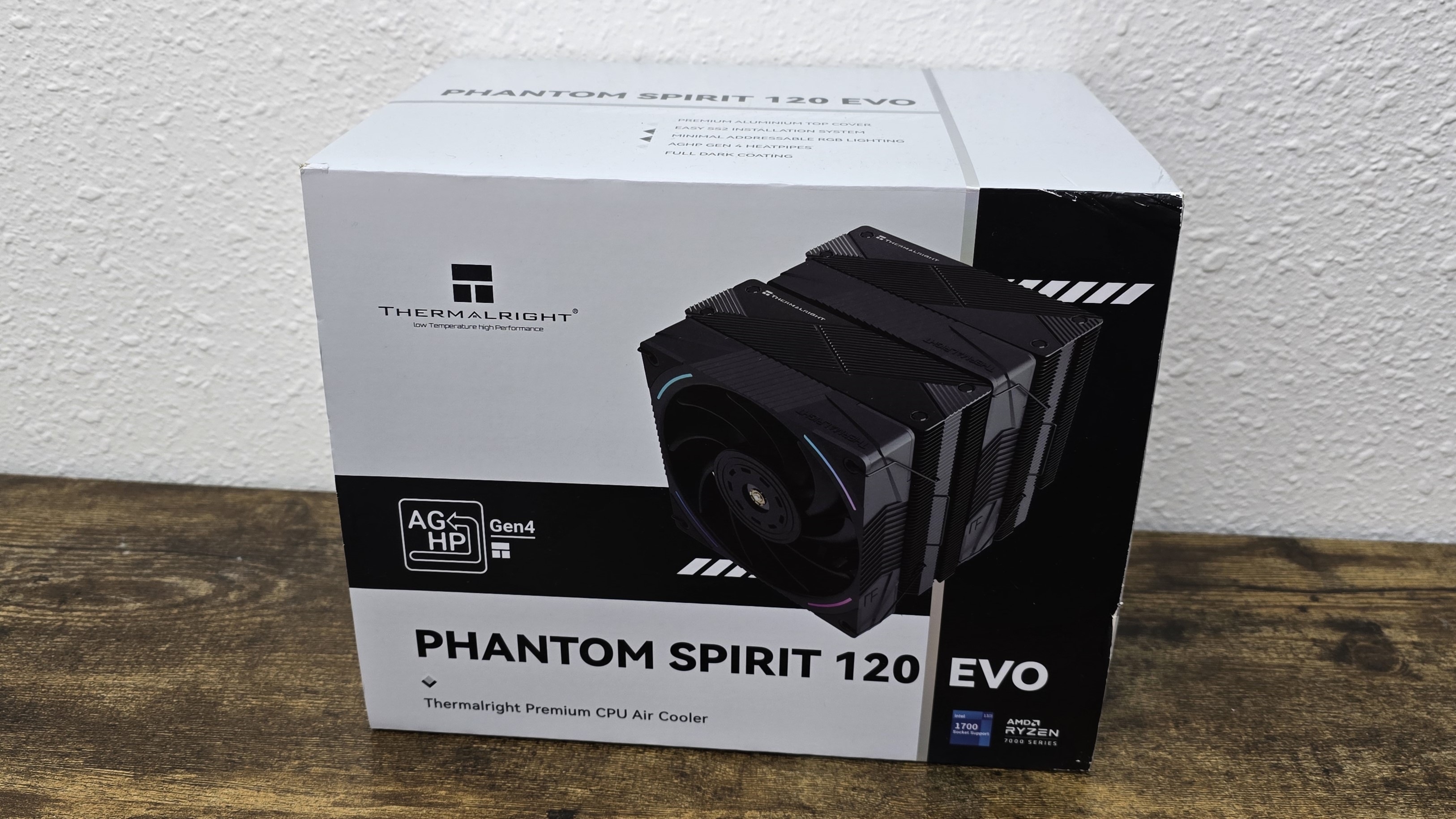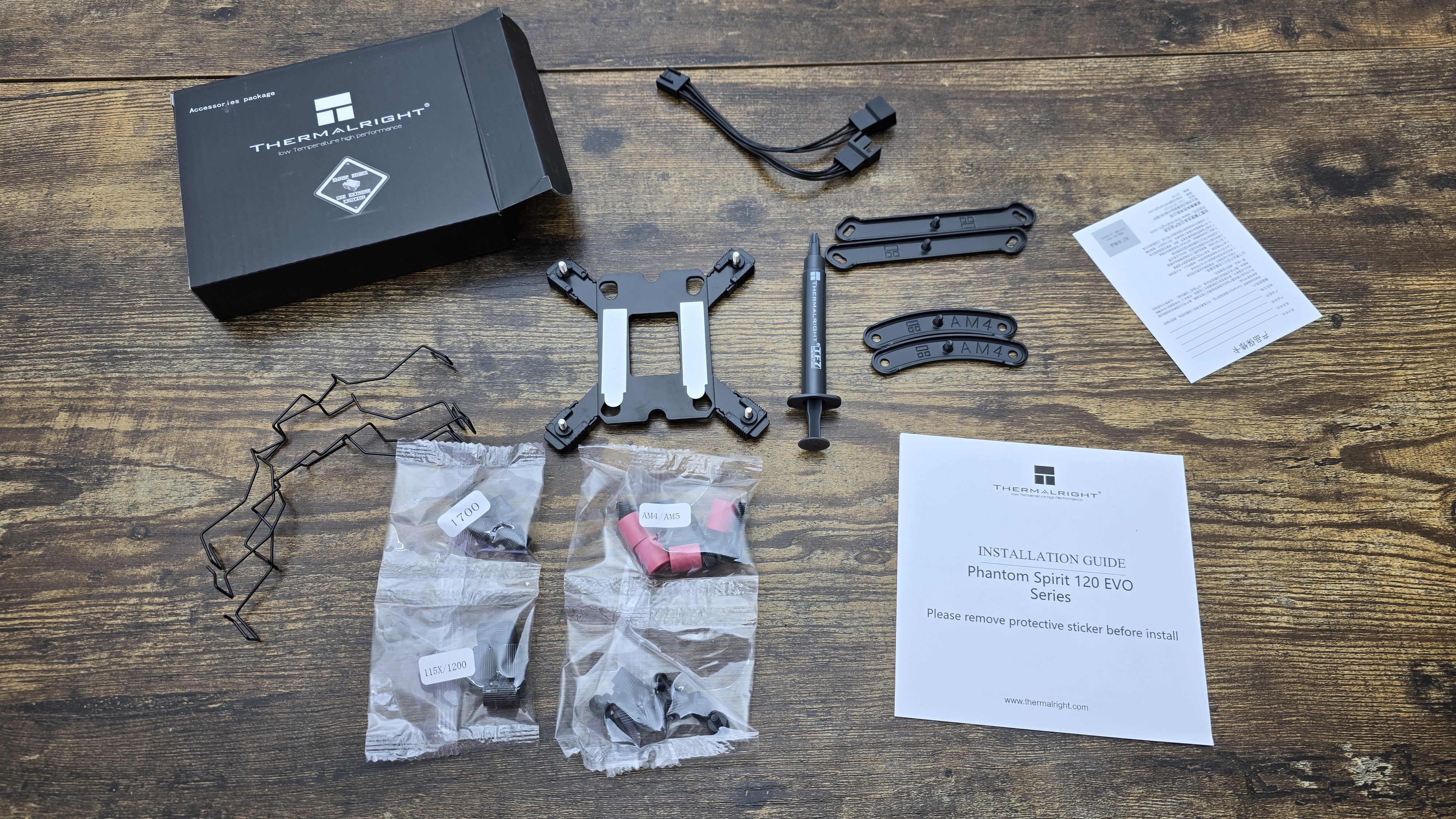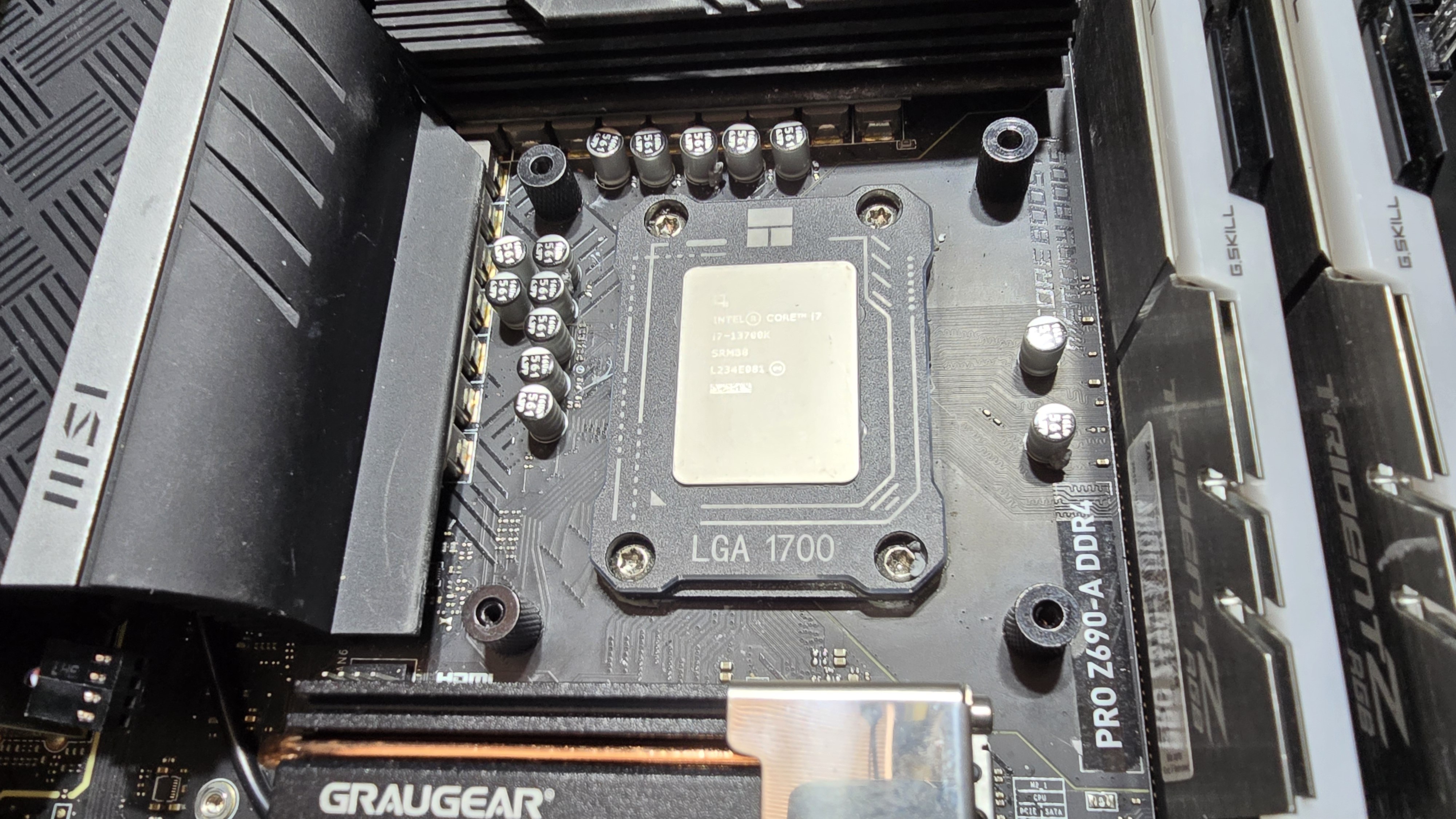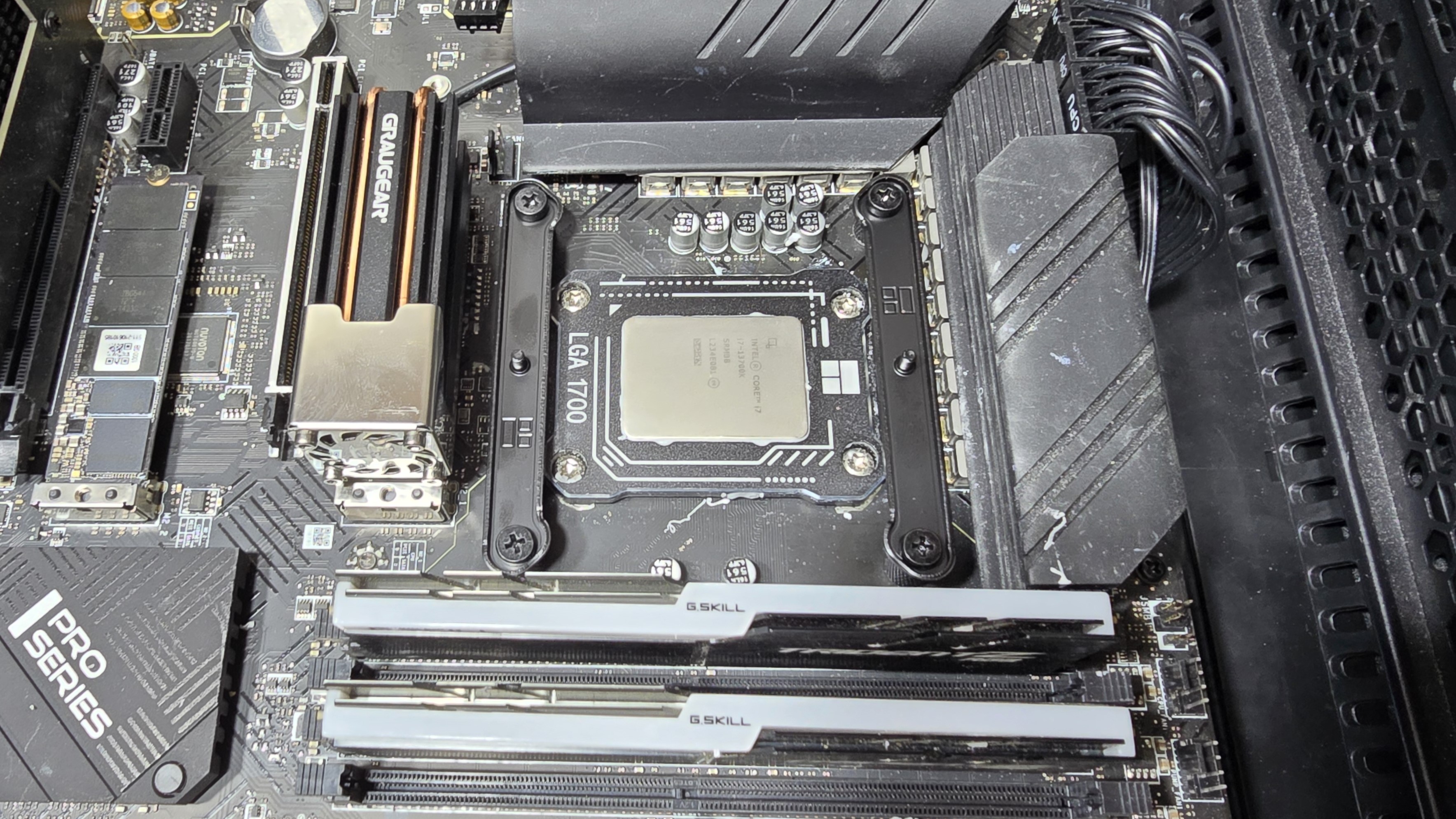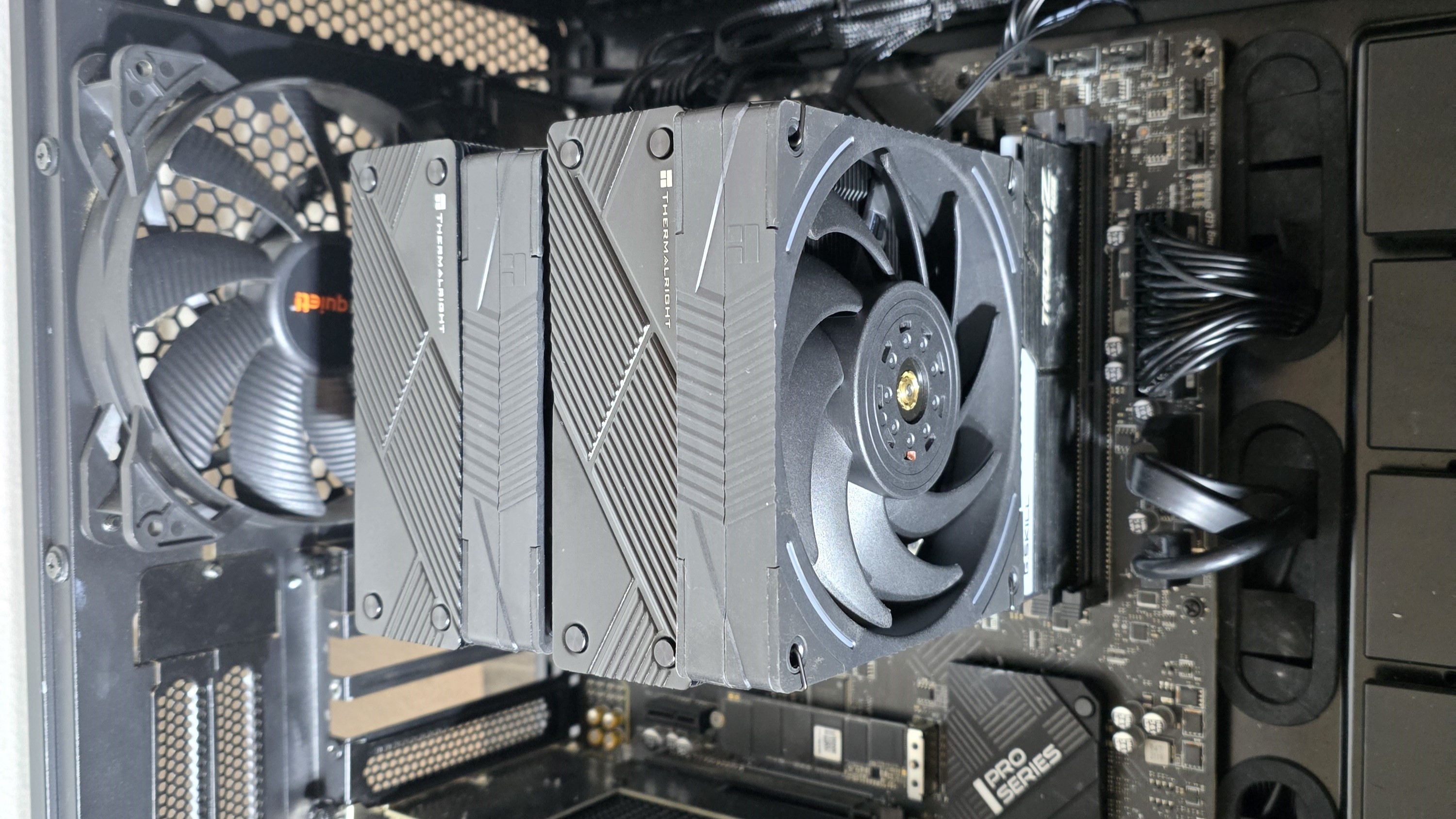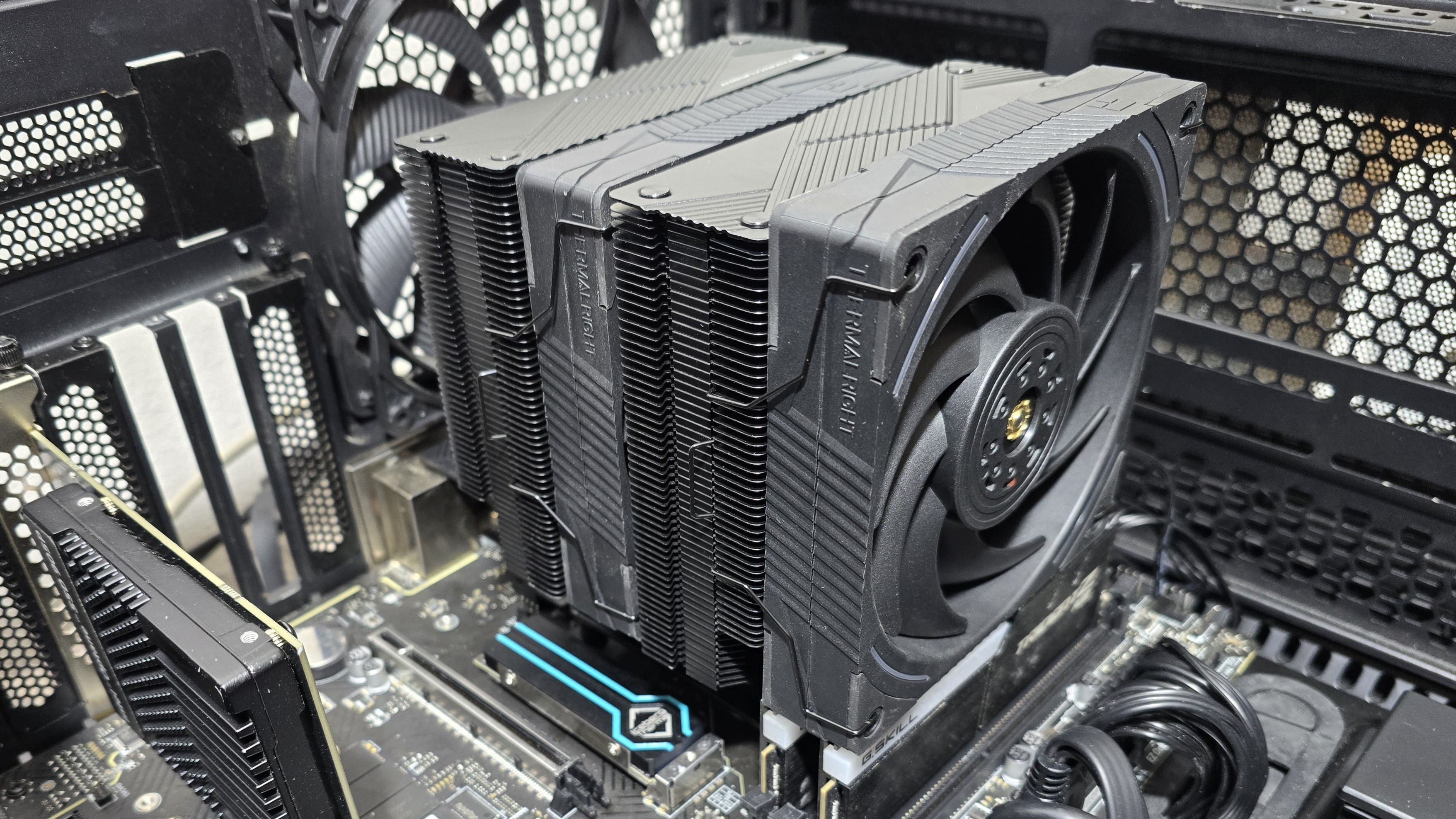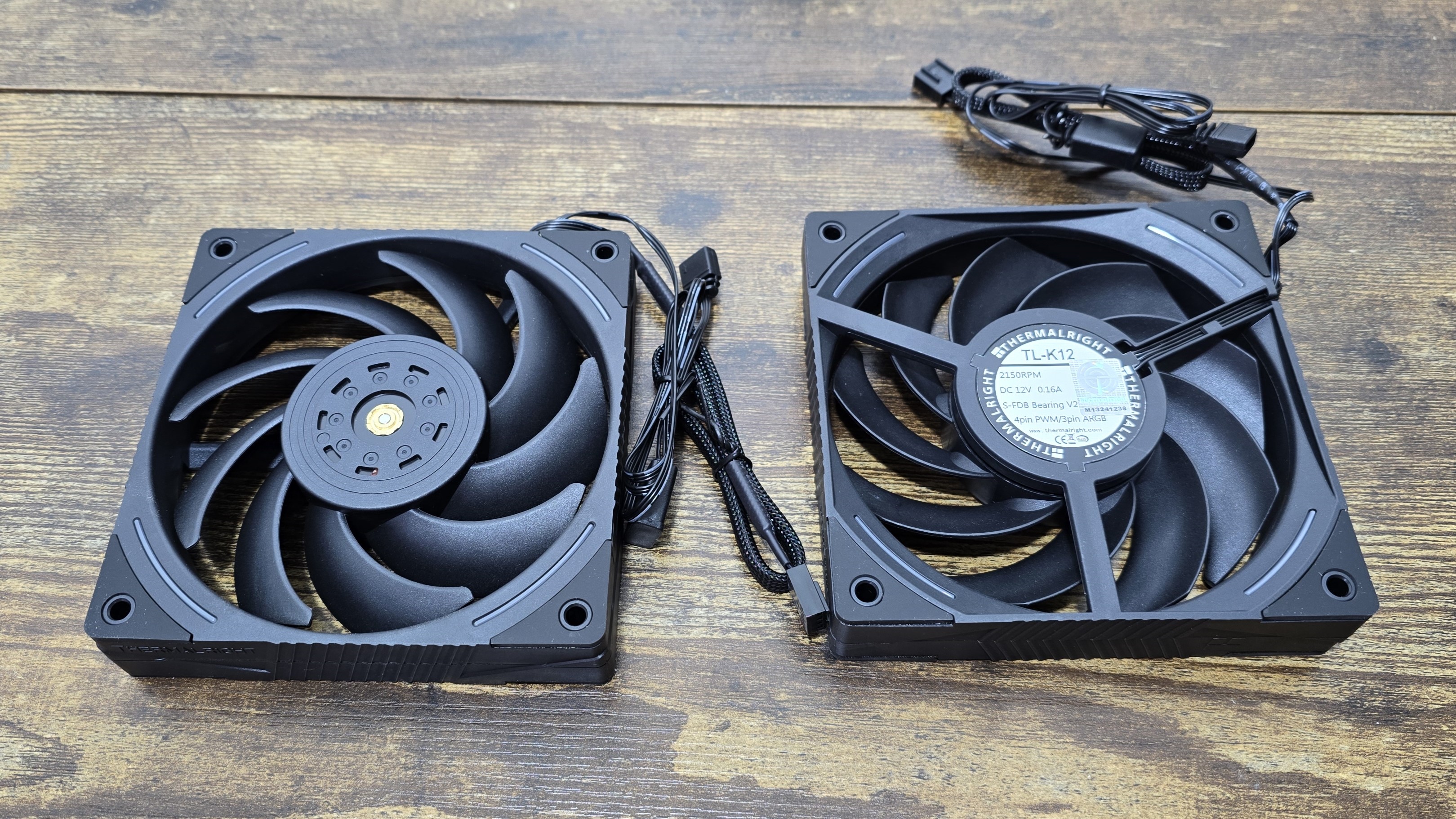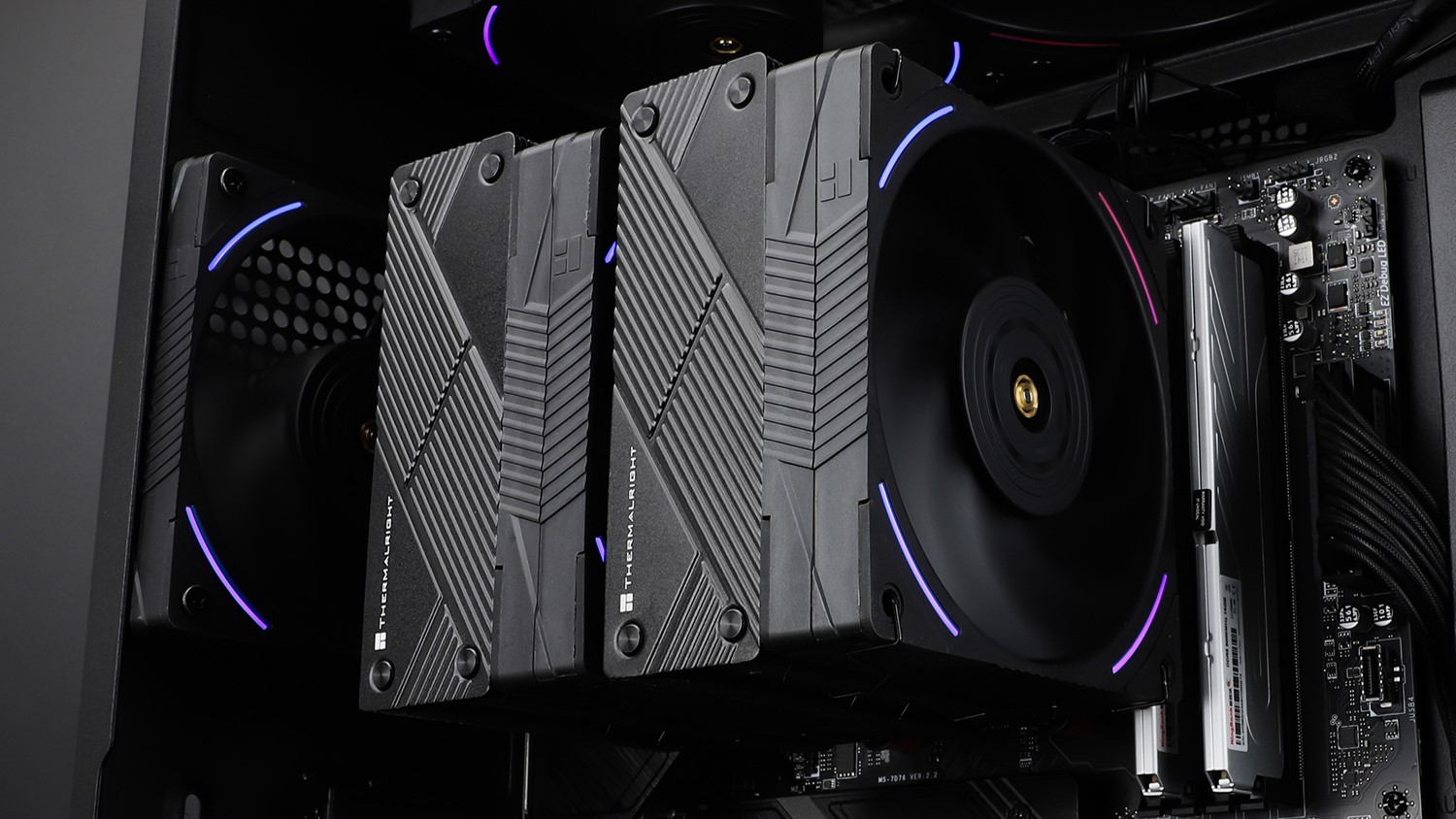Tom's Hardware Verdict
If you’re shopping for an air cooler and this one will fit in your case, you should buy it.
Pros
- +
Improved fans result in better performance
- +
Chart-topping noise normalized performance
- +
Lower noise levels in common situations
- +
Reasonable $43 USD price
Cons
- -
Higher maximum noise level
Why you can trust Tom's Hardware
It wasn’t that long ago that Thermalright released the original Phantom Spirit 120, which impressed me to the point I titled the review “Simply the Best.” I generally try to avoid clickbait headlines, so when I say something like that - it isn’t hype or lip service, it’s because I am genuinely impressed with a product’s performance and price.
It hasn’t even been six months since the previous review, but believe it or not Thermalright has already released an upgraded version of the same cooler called the Phantom Spirit 120 EVO. When I first heard an EVO version was going to be released, I wondered what the point was. The original version raised the bar for air cooling, and I found it hard to believe that it was possible to improve on its design – especially not after only a few months!
With today’s review we’ll look at the new EVO version of the Phantom Spirit to see if it can take the spot of the best air cooler from its predecessor. First, lets quickly take a look at the specifications from Thermalright and the features that set it apart from other coolers.
Cooler specifications
| Cooler | Thermalright Phantom Spirit 120 EVO |
| MSRP | $42.99 |
| Heatsink Material | Aluminum |
| Rated Lifespan | Unlisted |
| Socket Compatibility | Intel LGA 1700/115x/1200/2011/2066 AMD: AM5/AM4 |
| Base | Copper Base |
| Max TDP with Intel’s i7-13700K (Our Testing) | 238W |
| Dimensions | 110mm (L) x 125 mm (W) x 157mm (D) |
Packing and included contents
The Phantom Spirit 120 is protected during shipment with molded foam, plastic coverings, and cardboard.
Unlike the original version, which featured only basic brown packaging, the EVO includes an eye-catching black and white cover that showcases the product.
Included in with the cooler are the following:
- Two 120mm fans and fan clips
- Dual-tower heatsink
- Mounting for modern AMD and Intel Platforms
- Thermal Paste
- PWM splitter cord
- Mounting accessories
LGA 1700 installation
The installation of the cooler is unchanged from the original version of this cooler, and is simple to setup.
Get Tom's Hardware's best news and in-depth reviews, straight to your inbox.
1. Press the backplate against the rear of the motherboard, and then secure it using the included metal standoffs.
2. Next you’ll need to apply thermal paste to the CPU – and if you're unsure how to do that, see our How to Apply Thermal Paste primer.
3. Place the mounting bars on top of the standoffs and secure them with the included screws.
4. Place the heatsink on top of the CPU and secure it using the screws in between the two towers.
5. Secure the fans on the cooler using the included fan clips, and then connect the fans to the PWM and ARGB headers on your motherboard.
Features of Thermalright’s Phantom Spirit 120 EVO
Jet-black heatsink with seven copper heatpipes
The design of the heatsink is identical to that of the original Phantom Spirit 120, with the exception that it arrives in solid black rather than silver. The original model is shown on the left in the picture below, with the EVO model reviewed today on the right in black.
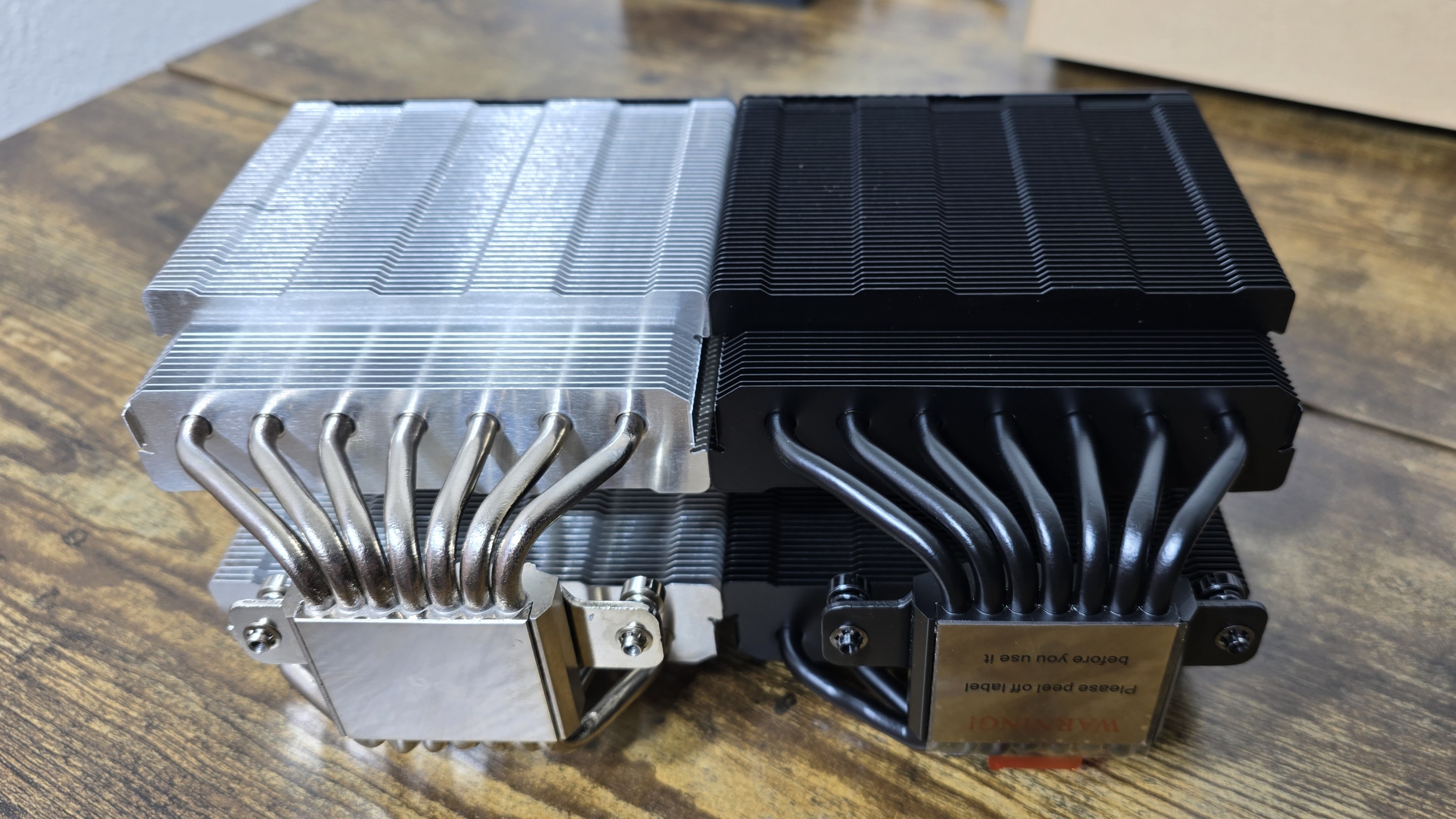
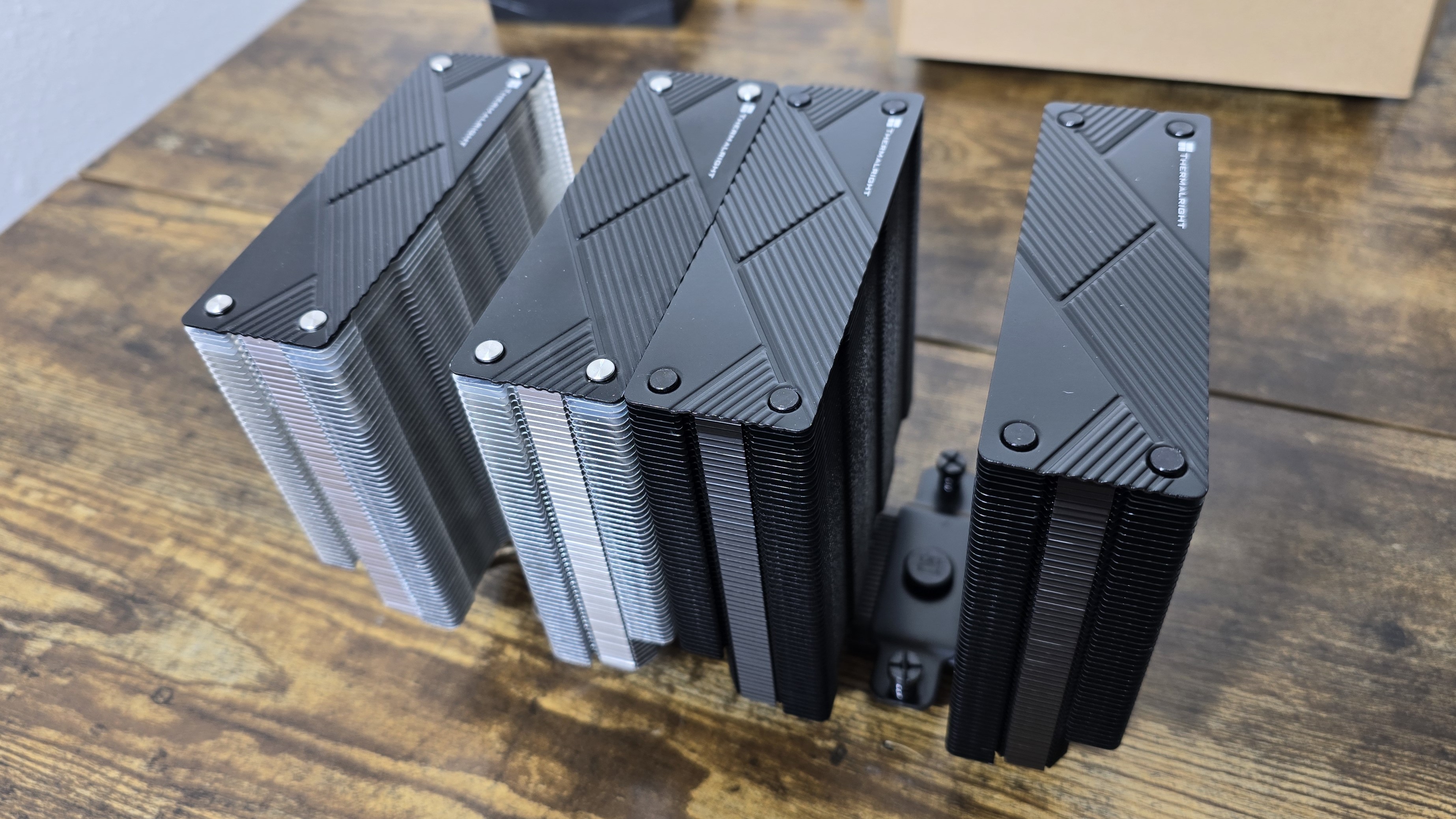
42mm+ RAM compatibility
The cooler is designed to be used with RAM 42mm or lower in height, but if you have taller memory, like my 45mm G-Skill DDR4 shown below, you’ll have to set the fan clips a little higher and move the fan up slightly. While in theory, this might cause some minor performance loss, it didn’t cause a problem in our testing as you’ll see in the benchmarks.
Upgraded TL-K12 120mm fans
There’s more to a cooler than just the heatsink or radiator; the fans included have a large impact on a cooler’s performance and are directly responsible for how loudly it runs. In the case of the Phantom Spirit 120 EVO, the fans are just about the only thing different in comparison to the original model. They feature Thermalright’s newest S-FDB V2 fan bearings and have higher maximum speeds, airflow, and static pressure ratings compared to the fans included with the original model of the Phantom Spirit 120.
While these fans do run louder at maximum speeds, in most common scenarios they run quieter than the original model’s fans, while providing superior cooling results. They also feature RGB in a unique manner that sets it apart from the competition – rather than having the RGB brightly illuminate the entire fan, Thermalright has included 4 small RGB strips to give the unit a more subtle RGB aesthetic.
Image Source: Thermalright
| Model | TL-K12 120mm fan |
| Dimensions | 120 x 120 x 25mm |
| Fan Speed | Up to 2150 RPM ± 10% |
| Air Flow | Up to 69 CFM |
| Air Pressure | Up to 2.87mmH2O |
| Bearing Type | S-FDB V2 Bearing |
| Lighting | ARGB |
| MFFT | Unlisted |
LGA1700 Socket Bending
There are many factors other than the CPU cooler that can influence your cooling performance, including the case you use and the fans installed in it. A system's motherboard can also influence this, especially if the socket suffers from bending, which results in poor cooler contact with the CPU.
To prevent bending from impacting our cooling results, we’ve installed Thermalright’s LGA 1700 contact frame into our testing rig. If your motherboard is affected by bending, your thermal results will be worse than those shown below. Not all motherboards are affected equally by this issue. I tested Raptor Lake CPUs in two motherboards. And while one of them showed significant thermal improvements after installing Thermalright’s LGA1700 contact frame, the other motherboard showed no difference in temperatures whatsoever! Check out our review of the contact frame for more information.
Testing methodology
Today's highest-end CPUs, whether Intel or AMD, are difficult to cool in intensive workloads. In the past. reaching 95 degrees Celsius or more on a desktop CPU might have been a cause for concern. But with today’s top-end CPUs, this is considered normal operation. Similar behavior has been present in laptops for years due to cooling limitations in tight spaces.
All testing is performed with a 23C ambient room temperature. Multiple thermal tests are run on each CPU to test the cooler in a variety of conditions, and acoustic measurements are taken with each result. These tests include:
1. Noise normalized testing at low noise levels
2. “Out of the box” / default configuration thermal & acoustics testing
a. No power limits enforced
b. Because CPUs hit Tjmax in this scenario, the best way to compare cooling strength is by recording the total CPU package power consumption.
3. Thermal & acoustics testing in power-limited scenarios
a. Power limited to 175W to emulate a medium-intensity workload
b. Power limited to 125W to emulate a low-intensity workload
The thermal results included are for 10-minute testing runs. To be sure that was sufficiently long to tax the cooler, we tested both Thermalright’s Assassin X 120 R SE and DeepCool’s LT720 with a 30-minute Cinebench test with Intel’s i9-13900K for both 10 minutes and 30 minutes. The results didn’t change much at all with the longer test: The average clock speeds maintained dropped by 29 MHz on DeepCool’s LT720 and 31 MHz on Thermalright’s Assassin X 120 R SE. That’s an incredibly small 0.6% difference in clock speeds maintained, a margin of error difference that tells us that the 10-minute tests are indeed long enough to properly test the coolers.
Testing configuration – Intel LGA1700 platform
| CPU | Intel Core i7-13700K |
| Motherboard | MSI Z690 A Pro DDR4 |
| Case | Be Quiet! Silent Base 802, system fans set to speed 1 setting. |
| Monitor | LG 45GR95QE |
| PSU | Cooler Master XG Plus 850 Platinum PSU |

Albert Thomas is a contributor for Tom’s Hardware, primarily covering CPU cooling reviews.
-
kyzarvs $43 claimed with an advert for it at over $60 (£52) in the UK, for when a 1:1 conversion rate doesn't quite stick it to us brits enough...Reply
My mother lives in Oregon, I'll ask her to send me one! -
Albert.Thomas Reply
I suppose I'm gonna have to add some clarifying language.slash3 said:Still trolling us with your wacky DIMM placement, you evil person, you.
Great cooler.
This is on purpose - to make sure the cooler won't have compatibility with 4 DIMM systems. -
Albert.Thomas Reply
I have the Frost Commander 140 which has 5 x 8mm in the resultsoussama baccara said:please add the frost spirit 5 x 8mm pipes. -
Albert.Thomas Reply
$42 vs $100+, and 2C cooler AND quieter? Yes, that's a massacre.SantaSade said:A good 2C cooler than a Noctua D15 is a massacre? Talk about hyperbole. -
Alexen.irk Reply
Yep, TL-K12 model and non rgb TL-B12 version if you no need it.mwm2010 said:Those fans are wild. Does Thermalright sell them separately?
https://www.thermalright.com/product/tl-k12/https://www.thermalright.com/product/tl-b12/ -
Amdlova Reply
Two degree on air cooler is a massacre and 1/2 price it's another massacreSantaSade said:A good 2C cooler than a Noctua D15 is a massacre? Talk about hyperbole.
